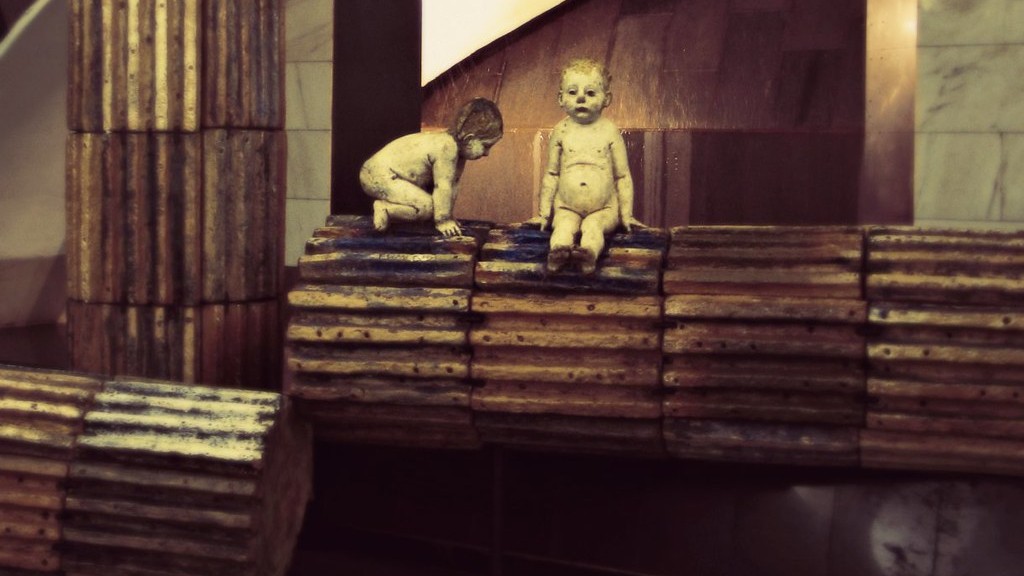The toga was an essential garment for any Roman. With the development of complex civil structures in the Roman Republic, it became a piece of pride and patriotism, allowing Romans to recognize other citizens’ identities as well as their own. So, who in ancient Rome wore the toga?
During the Republian period (509 BCE to 27 BCE), the toga was the official garment of Roman men who were citizens by birth. It was a heavy garment made of wool or linen and reached up to three meters in length and two meters in width. It was draped over the body and fastened around the waist with a belt. The ancient Romans considered it a sign of citizenship and was used to mark social rank, wealth, and power.
The toga was worn while conducting public business and attending religious ceremonies. It was the most formal clothing and was most commonly used by the elite class. During the Republican period, only free-born males could don the toga: slaves, women and non-citizens were forbidden to wear it. Both adults and children wore it but the boys had to wear a shorter version that reached near the knees.
During the imperial period (27 BCE to 476 CE), the toga virginica — or “virgin toga” — was used in the distinctive state robe of the emperor. This was a purple toga bordered with gold, and the only person authorized to wear it was the emperor. In the imperial period, laws were also established to restrict who could wear the toga. Only citizens were allowed to wear it, with the status of the wearers determined by various colors: white for senators, dark red for equestrians and off-white for the lower classes.
Moreover, the toga had a variety of other social and religious uses. It was used to denote the rank of a priest or to mark festive occasions, such as marriages. It was also used in political functions and religious ceremonies. The emperor Caligula was renowned for wearing his purple toga at executions, as a sign that death came at his command.
For centuries, the toga was a deeply rooted part of the Roman identity. It marked the boundaries between social classes, as well as between citizens and non-citizens, and was seen as a symbol of Roman patriotism and pride.
Toga Variations
The toga was normally made of two different fabric colors — the sines or pullus for the inner layer, and the toga pura or candida for the outer layer. These fabrics were chosen for their social significance as well as aesthetics: black and white were the colors of death and life, respectively, and purple was associated with the ruling power.
The most important variation to emerge was the toga picta. This toga was often used in military parades and in the performance of official ceremonies. It was made of purple fabric with embroidery and gold thread and was seen as a symbol of power. It was also used by the consuls, praetors and emperors.
Another popular variation was the toga trabea. This was especially important in religious ceremonies and was only worn by the highest priest of Jupiter. This toga was adorned with seven stripes of purple, which were believed to represent the rainbow.
The toga palmata was also a common variation, and was typically made of white cloth with embroidered palmettes — an ancient motif that was thought to evoke laurel and other symbols of excellence. It was sometimes used by the emperor to mark certain occasions — such as the triumphal parade — and was considered an important symbol of his power.
Styling the Toga
The toga had to be styled properly for it to look dignified. Roman men wrapped the material around their bodies in such a way that it effectively demonstrated their social rank. This was done by draping it in specific ways, depending on the occasion. The way the toga was draped was also important in distinguishing between the sexes.
For instance, the toga pulled over the left shoulder was known as the toga sinistra. This was the traditional style worn by Roman men, and was also known as the toga praetexta when special occasions demanded it. Furthermore, the toga virilis, or man’s toga, was the name given to the toga that reached the feet, and was reserved for citizens who had completed the Lucanian rite — a religious ceremony for entering adulthood.
In addition to the different styles of draping, the toga was worn with various accessories. The Roman shoes called calcei, a belt known as a cingulum, and an ornamental clasp called the fibula, which was used to secure the garment around the waist, were all acceptable to wear with the toga.
Social Significance of the Toga
Throughout its history, the toga has held a social significance for the Roman people. From the Republican period to the imperial period, the toga presented members of society with a display of power and status. It was a symbol of patriotism and was seen as a marker of Roman civilization.
The toga was also a significant symbol in terms of law-making and the exercise of power. It was used to confer authority and legitimize office holders. It communicated power, privilege and honor and was used to distinguish between citizens and non-citizens.
Furthermore, the toga had a close relationship with religion. During the earlier centuries of the Roman Republic, it was part of the ceremonies and rituals to appease the gods. Every move towards power and greatness in the Republic was led by the toga’s presence in important occasions. It even had special versions for Roman priests and emperors. It was the most widely recognized symbol of divinity.
Evolution of the Toga
In the centuries after the Roman Empire, the toga gradually fell out fashion, although it is still seen as a traditional part of certain occasions, such as university graduation ceremonies. Throughout its history, the toga has been an important symbol of Roman culture and has been a clear sign of honest citizenship.
In the modern world, it has been adapted and incorporated into fashionable clothing. Brands and designers have adopted the toga silhouette for contemporary clothing, and it is gaining traction among younger generations. It has been reinvented to reflect today’s trends and continues to be associated with power, status and sophistication.
Conclusion of the ‘Toga’
Today, the toga remains an enduring symbol of history, power and status. It was a widespread garment that identified a person’s place in the ancient Roman world — a world where rank and social standing held a great deal of importance. It still carries with it a strong sense of pride, patriotism and power, and it continues to fascinate people to this day.




